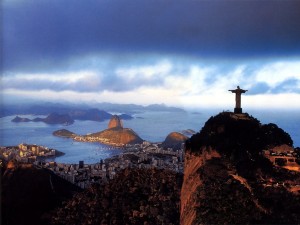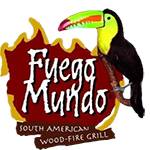
Welcome back to our series of posts from the FuegoMundo blog that will focus on South and Latin American culture and history.
As you know, we are trying to build a wonderful customer experience for you at FuegoMundo. And one of our most important goals is to give you a small taste of South America, and its unique culture.
We hope you enjoy learning about this very special place…
Enjoy Rio de Janeiro!
DID YOU KNOW?
• The city’s nicknames are “ Rio” and “The Marvelous City”.
• Residents of Rio de Janeiro are known as Cariocas.
• Each year 6 million people visit Rio de Janeiro.
• The official language of Brazil is Portuguese.
• The ‘Christ the Redeemer’ statue, atop Corcovado Mountain in Rio de Janeiro, has been named one of the New Seven Wonders of the World.
• Maracanã Stadium in Rio is one of the world’s largest soccer stadiums.
• Rio was named the Host City of the 2016 Olympics! This will be the first time in history that the Olympic Games are held in South America.
CARNIVAL
Carnival is a famous festival that takes places in Rio de Janeiro every year in February or March. Thousands of people from all over the world come to experience all the Carnival has to offer. It is a 4-day celebration beginning on the Saturday before Fat Tuesday, or Mardi-Gras every year. Mixing Latin, African and European influences, Brazilians dress in elaborate costumes for the parades down the streets of Rio during Carnival.
HISTORY
On March 1, 1565 the city of Rio de Janeiro was founded. Until early in the 18th century, the city was threatened and invaded by several pirates, until the Portuguese arrived. Rio de Janeiro became the capital of the Portuguese Empire from 1808 until 1821, and later the capital of Brazil from 1822 to 1960, after Brazil gained independence. In 1960, Brasilia was named the new Capital of Brazil.
GEOGRAPHY & DEMOGRAPHICS
Rio de Janeiro is the second largest city of Brazil and South America, behind São Paulo, and the third largest metropolitan area in South America, with a population of approximately 11 million people. Rio de Janeiro is divided into several districts, or zones, which are the historic downtown area called Centro, the South Zone, North Zone, and West Zone. Each zone offers its own attractions. The Centro area includes historic downtown & cultural attractions, the South Zone includes Rio’s beaches, and the North Zone caters to local industry, while the West Zone is a newer area called the Barra de Tijuca district.
ATTRACTIONS
Rio de Janeiro is famous for its natural settings, Samba & hotel-lined tourist beaches. Some other famous landmarks include the Christ the Redeemer Statue (‘Cristo Redentor’) atop Corcovado Mountain. The city also boasts the largest urban forest in the world: Floresta da Tijuca.
